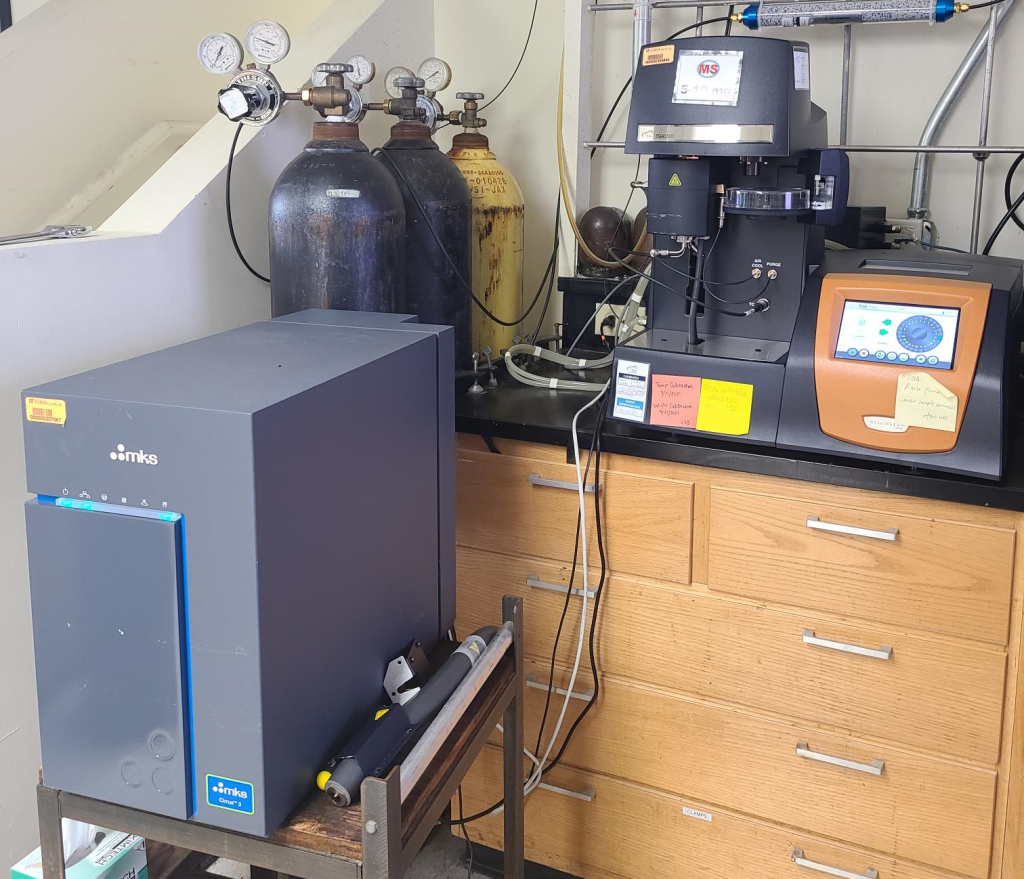
| TA Instruments | TGA Discovery 5500 |
| MKS | RGA Cirrus 3 |
| Temperature range | 20 – 1200 °C |
| Rate | 0.1 – 100 °C/min* |
| Mass range | 1 – 300 amu |
| Material | 5 – 20 mg (typical) 1 – 5 mg (TGA-MS) |
| Pans available for use | Enclosed Aluminum Platinum HT Platinum Alumina/Ceramic |
Thermogravimetric analyzers (TGA) measure weight change (usually weight loss) and the rate of weight change as a function of temperature (and optionally atmosphere). Pan and sample weights are measured in comparison to a reference pan, typically a platinum pan.
Thermogravimetric data is required for setting proper temperature limits for Differential Scanning Calorimetry (DSC) and Dynamic Mechanical Analysis (DMA) experiments. Other common usages include determination of thermal and oxidative stability of materials, moisture and volatile contents, composition of multi-component materials, decomposition kinetics and estimated lifetime of a product, and effects of reactive or corrosive atmospheres. Multi-gas introduction (nitrogen, helium, argon, air) and/or modulation experiments are possible, depending on experimental needs. Samples are typically analyzed in a nitrogen environment, but different gaseous environments may also be requested. Or, sensitive (air or water) samples can be enclosed to protect from decomposition or reaction prior to analysis.
With the residual gas analyzer (RGA) attachment, mass spectrometry analysis can be done on the evolved gas of the TGA experiment to further identify and quantify the relative amounts of a sample’s decomposition products as function of increasing temperature. Decomposition or reaction products can be acquired for the full mass range (1 – 300 amu) or for selected ions (up to 10). NIST library searching can also be performed on full range spectra to help determine product ion identities.